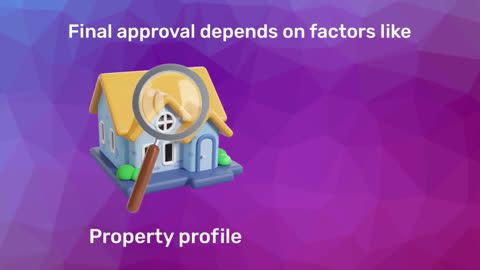The repo rate is a key tool used by the Reserve Bank of India (RBI) to manage liquidity, inflation, and overall economic stability. It represents the interest rate at which commercial banks borrow funds from the RBI by pledging government securities. Changes in this rate directly influence the cost of borrowing for banks, which in turn affects interest rates for consumers and businesses. As such, the repo rate plays a central role in shaping lending behaviour, controlling inflation, and maintaining economic growth. Understanding this concept is vital for anyone looking to grasp how India's monetary system operates.
In this article, we will take a comprehensive look at the repo rate, including what it is and how it works. We will also examine the current repo rate in India, its importance in the financial system, and how changes in the rate impact consumers and businesses. You will also gain insight into historical trends, understand the difference between repo rate and reverse repo rate, and explore the broader implications of this crucial monetary policy instrument on the Indian economy.
What is repo rate?
The repo rate, short for “repurchase rate”, is the interest rate at which the Reserve Bank of India (RBI) lends short-term funds to commercial banks to help them manage temporary liquidity shortages. In exchange for these funds, banks provide government securities as collateral, ensuring the loan is backed by low-risk assets.
This arrangement functions through a repurchase agreement, where:
The borrowing bank agrees to buy back the securities at a later date.
This is usually done at a slightly higher price that includes the interest charged at the repo rate.
This mechanism helps the RBI regulate money supply, control inflation, and maintain overall economic stability. When the repo rate rises, borrowing becomes more expensive for banks, potentially leading to higher loan interest rates for consumers. Conversely, a lower repo rate encourages borrowing and spending, stimulating economic activity.
Latest repo rate changes: RBI issues April 2025 policy update
On April 9, 2025, the Reserve Bank of India (RBI) announced a 25 basis point reduction in the repo rate, bringing it down from 6.25% to 6.00%. This decision was taken unanimously by the Monetary Policy Committee (MPC) during its 54th meeting, marking the second consecutive rate cut following a similar move in February 2025. The RBI also shifted its monetary policy stance from 'neutral' to 'accommodative', signalling a focus on supporting economic growth amid global uncertainties.
Key policy decisions:
Repo rate: Reduced to 6.00%
Standing Deposit Facility (SDF) rate: Adjusted to 5.75%
Marginal Standing Facility (MSF) rate and bank rate: Set at 6.25%
These adjustments aim to stimulate lending and investment, providing relief to borrowers and supporting sectors like housing and infrastructure. The RBI's decision comes in the backdrop of easing inflation, with the Consumer Price Index (CPI) projected at 4.0% for the fiscal year 2025–26, down from the earlier estimate of 4.2%. Additionally, the GDP growth forecast has been revised to 6.5%, reflecting cautious optimism amid global trade tensions and domestic economic challenges.
The RBI's accommodative stance indicates that future policy actions will likely focus on maintaining or further reducing rates to bolster economic activity, depending on evolving inflation and growth dynamics.
How the repo rate works
When banks need funds to manage their day-to-day operations or to meet reserve requirements, they approach the central bank. They sell government securities to the central bank with an agreement to repurchase them at a later date at a predetermined price. The difference between the selling price and the repurchase price is the interest paid by the banks, which is determined by the repo rate.
Current repo rate in India
As of April 2025, the Reserve Bank of India (RBI) has set the repo rate at 6.00% following a 25 basis point reduction by the Monetary Policy Committee. This move is aimed at boosting economic growth amid easing inflation and improving liquidity.
RBI repo rate:
The following are the latest repo rate and reverse repo rate (as of May 29, 2025):
Policy instrument |
Current rate (as of May 2025) |
Repo rate |
6.00% |
Reverse repo rate |
3.35% |
Bank rate |
6.25% |
Marginal Standing Facility rate (MSF) |
6.25% |
The importance of the repo rate
The repo rate is a vital instrument in the Reserve Bank of India’s monetary policy toolkit, used to maintain balance in the economy. By adjusting this rate, the RBI addresses key macroeconomic goals such as inflation control, economic growth, and liquidity management.
Inflation management: When inflation rises above desired levels, the RBI may increase the repo rate, making loans costlier for banks and consumers. This helps reduce spending and slows inflation.
Boosting economic growth: In times of sluggish economic activity, the RBI may cut the repo rate to make borrowing more affordable. This encourages lending, investment, and consumption, which supports economic recovery.
Liquidity regulation: The repo rate helps the RBI control liquidity in the banking system. By making funds more or less accessible to banks, the RBI ensures the system remains liquid yet stable, reducing the risk of financial stress.
Through these functions, the repo rate plays a central role in steering India’s monetary and economic landscape.
How is repo rate calculated?
The repo rate is not a fixed formula-based calculation but a policy rate determined by the Reserve Bank of India (RBI) based on a wide range of economic indicators and macroeconomic conditions. The decision to change or maintain the repo rate is made by the Monetary Policy Committee (MPC), which meets every two months. Here's how the process works:
1. Inflation trends
The RBI closely tracks Consumer Price Index (CPI) inflation. If inflation is rising above the target range (4% ±2%), the RBI may raise the repo rate to control spending and reduce demand. If inflation is under control, a lower rate may be considered to boost economic activity.
2. Economic growth
Slower GDP growth prompts the RBI to cut the repo rate to stimulate borrowing and investment. Conversely, strong growth with rising inflation might justify a rate hike.
3. Liquidity conditions
The RBI evaluates liquidity in the banking system. Excess liquidity might lead to higher inflation, prompting a repo rate increase. A liquidity crunch, on the other hand, may result in a rate cut to support credit flow.
4. Monetary Policy Committee (MPC)
The MPC, a six-member body comprising RBI officials and government-appointed experts, considers inflation forecasts, global financial trends, fiscal policies, and domestic economic indicators. Their decisions are based on a combination of data analysis and policy judgment.
In essence, the repo rate is the result of a dynamic assessment of economic health, with the goal of ensuring price stability, financial stability, and sustainable growth.
Impact of repo rate on consumers
Changes in the repo rate have a direct and noticeable impact on everyday consumers, influencing both borrowing costs and returns on savings. Understanding how these changes affect personal finances can help individuals make informed financial decisions.
Loan and EMI costs: When the repo rate increases, banks typically raise lending rates, making home loans, personal loans, and car loans more expensive. This leads to higher EMIs. A reduction in the repo rate generally results in lower interest rates, easing the repayment burden for borrowers.
Savings and deposit returns: Higher repo rates often prompt banks to offer better returns on fixed deposits and savings accounts to attract funds. On the other hand, when the repo rate falls, banks may lower deposit rates, reducing interest income for savers.
Mortgage payments: For individuals with floating-rate home loans, repo rate adjustments can change monthly repayments. A rate hike increases mortgage costs, while a rate cut may lower them.
Thus, whether you are borrowing or saving, repo rate changes can significantly influence your financial well-being.
Impact of repo rate on the economy
- Inflation control: One of the primary functions of the repo rate is to control inflation. When inflation is high, the central bank may increase the repo rate. This makes borrowing costlier for banks, which in turn leads to higher interest rates for borrowers. Consequently, borrowing becomes more expensive, reducing consumer spending and investment, thereby helping to control inflation.
- Liquidity management: The repo rate also helps manage liquidity in the economy. A higher repo rate means banks have less access to cheap funds, leading to reduced liquidity. Conversely, a lower repo rate increases liquidity as banks can borrow more easily and at lower costs. This balance ensures that the economy does not suffer from either excessive inflation or deflation.
- Economic growth: By influencing borrowing costs, the repo rate directly impacts economic growth. Lower repo rates typically encourage borrowing and investing, leading to economic expansion. Conversely, higher repo rates can slow down borrowing and spending, potentially slowing down economic growth.
- Impact on home loans: The repo rate has a direct impact on home loan interest rates. When the central bank reduces the repo rate, banks can borrow at lower costs. They often pass on these benefits to consumers in the form of lower home loan interest rates. For potential homeowners, understanding the repo rate can be crucial in deciding the right time to take out a home loan.
Practical implications for businesses
The repo rate plays a crucial role in shaping business decisions, particularly in areas related to borrowing, investment, and financial planning. Here's how shifts in the repo rate affect businesses:
Borrowing costs: An increase in the repo rate raises the interest rates on business loans, making borrowing more expensive. This can lead companies to cut back on capital expenditures, postpone expansion, or scale down operational plans. Conversely, a lower repo rate reduces borrowing costs, encouraging firms to take loans for growth and development.
Cash flow management: Businesses often rely on short-term credit to manage day-to-day operations. Changes in the repo rate directly impact interest outflows, influencing how companies manage working capital and allocate resources.
Investment strategy: The prevailing interest rate environment influences a company’s risk appetite and investment plans. A lower repo rate may stimulate investment in new projects, equipment upgrades, or hiring, while a higher rate environment often leads to more conservative financial strategies.
Understanding repo rate trends is essential for businesses aiming to maintain financial stability and make sound strategic decisions.
Historical trends of repo rate in India
| Year | Repo Rate (%) |
| 2010 | 6 |
| 2011 | 8.5 |
| 2012 | 8 |
| 2013 | 7.5 |
| 2014 | 8 |
| 2015 | 6.75 |
| 2016 | 6.25 |
| 2017 | 6 |
| 2018 | 6.5 |
| 2019 | 5.15 |
| 2020 | 4 |
| 2021 | 4 |
| 2022 | 4.4 |
| 2023 | 6.5 |
| 2024 | 6.5 |
| 2025 | 6.25 |
What is affected by a change in repo rate?
A change in the repo rate can trigger a ripple effect across multiple areas of the economy, particularly those related to lending, borrowing, and saving.
Loan interest rates and EMIs: An increase in the repo rate leads to higher interest rates on loans such as home loans, personal loans, car loans, and business loans, raising the EMIs for borrowers. A decrease, on the other hand, usually results in lower EMIs.
Savings and deposit rates: Fixed deposits, savings accounts, and other interest-bearing products are impacted as banks adjust their deposit rates in line with the repo rate. Higher repo rates typically mean better returns for savers.
Mutual funds and investments: Debt mutual funds are sensitive to interest rate changes. A hike in the repo rate may reduce bond prices, affecting returns, while a cut could improve them.
Overall, any change in the repo rate significantly influences both consumers’ financial decisions and the broader economic landscape.
Repo rate impact on home loans EMIs
The repo rate directly impacts the interest rates on home loans, which in turn affects the Equated Monthly Instalments (EMIs). Here's how:
- Lower repo rate: When the repo rate is reduced, banks can borrow from the central bank at a lower cost. This often leads to a reduction in home loan interest rates, making EMIs more affordable. Potential homeowners can benefit from lower monthly repayments, making homeownership more accessible.
- Higher repo rate: An increase in the repo rate means higher borrowing costs for banks. This typically results in an increase in home loan interest rates, making EMIs more expensive. Existing borrowers may see an increase in their monthly repayments, impacting their financial planning.
Consider a home loan of Rs. 50 lakh at an interest rate of 8% with a tenure of 20 years. If the repo rate is reduced, and the bank lowers the home loan interest rate to 7.5%, the monthly EMI will decrease, making it easier for the borrower to manage their finances.
Important Links: Home Loan Eligibility Criteria | Documents Required for Home Loan | Home Loan Balance Transfer | Joint Home Loan | Home Loan Tax Benefits | Home Loan Subsidy | Housing Loan Top Up | Rural Home Loans
How does repo rate affect fixed deposits (FDs)?
The repo rate has a direct influence on fixed deposit (FD) interest rates, which, in turn, affects the returns for investors. When the RBI increases the repo rate, banks often raise their FD rates to attract more deposits. This is beneficial for investors, as higher interest rates translate into better maturity amounts. Conversely, when the repo rate is lowered, FD rates may also decline, reducing the overall return on investment.
Although the actual FD rates are set by individual banks and NBFCs, they typically align with the direction of the RBI’s repo rate.
Let us look at an example to understand this better:
Repo rate |
FD interest rate (5 years) |
Investment amount |
Maturity amount |
5.50% |
6.00% |
Rs. 1,00,000 |
Rs. 1,33,822 |
6.00% |
6.50% |
Rs. 1,00,000 |
Rs. 1,37,814 |
6.50% |
7.00% |
Rs. 1,00,000 |
Rs. 1,41,914 |
7.00% |
7.50% |
Rs. 1,00,000 |
Rs. 1,46,122 |
Note: Maturity amounts are indicative and may vary based on compounding frequency and bank policies.
Thus, higher repo rates tend to make FDs more attractive to risk-averse investors, offering improved returns over time.
How does repo rate affect the stock market?
The repo rate plays a significant role in influencing stock market movements, as it directly affects borrowing costs and business sentiment. Generally, there is an inverse relationship between interest rates and the stock market.
When the RBI raises the repo rate, borrowing becomes more expensive for businesses.
As a result, companies may cut back on expansion, reduce investments, and delay growth initiatives.
This can lead to lower earnings and reduced future cash flows, which often causes investor sentiment to dip and stock prices to decline.
On the other hand, a reduction in the repo rate lowers financing costs, encouraging business activity and potentially boosting corporate profits. This often leads to positive movement in the stock market, as investors anticipate improved financial performance.
In short, repo rate changes are closely watched by market participants, as they can influence both equity valuations and investment strategies.
What are the components of a repo transaction?
A repo transaction involves several key components that define how the Reserve Bank of India (RBI) lends funds to commercial banks. These components ensure short-term liquidity in the banking system while maintaining financial stability. Here's a breakdown:
Monetary control: The RBI adjusts the repo rate to manage inflation and economic activity. Increasing the rate curbs excess liquidity, while lowering it encourages borrowing and spending.
Short-term lending: Repo transactions are designed for short-term borrowing, often overnight. Banks agree to repurchase the securities they sold to the RBI at a later date, typically the next day.
Collateral and securities: Banks provide government securities, bonds, or gold as collateral. These assets are held by the RBI until the repurchase is completed.
Liquidity management: Banks use repo borrowing to maintain adequate cash reserves and meet short-term obligations, especially during liquidity shortages.
Hedging and leverage: Repo agreements allow the RBI to inject funds into the banking system while holding secured collateral, ensuring both risk control and market balance.
Together, these components form the foundation of a secure and effective repurchase (repo) agreement in India’s monetary framework.
Repo rate vs reverse repo rate
Feature |
Repo Rate |
Reverse Repo Rate |
Definition |
Rate at which central banks lend to commercial banks |
Rate at which central banks borrow from commercial banks |
Purpose |
Inject liquidity into the banking system |
Absorb liquidity from the banking system |
Impact on economy |
Lower rates can boost economic activity |
Higher rates can reduce inflationary pressure |
Interest rates |
Affects borrowing costs for banks and consumers |
Influences the returns on deposits for banks |
Relationship between inflation and present repo rateThere is a strong connection between inflation levels and the repo rate set by the Reserve Bank of India (RBI). As one of its core monetary tools, the repo rate is used by the RBI to regulate inflation and maintain price stability in the economy.
Managing inflation through rate hikes: When inflation is high or rising beyond the RBI’s target (4% ±2%), the central bank may increase the repo rate. This makes borrowing more expensive for banks, which in turn raises interest rates for consumers and businesses. The result is reduced borrowing and spending, helping to cool down inflationary pressures.
Influencing consumer and producer demand: By adjusting the repo rate, the RBI can indirectly impact consumer prices (CPI) and producer prices (WPI). Higher rates lead to lower demand, which can reduce price levels. Conversely, lower repo rates encourage borrowing, increase demand, and may contribute to rising prices.
Delayed impact and broader factors: It is important to note that changes in the repo rate do not affect inflation instantly. The effects take time to filter through the economy and may be influenced by other factors such as fiscal policy, international commodity prices, and supply disruptions.
In essence, the repo rate serves as a balancing tool, helping the RBI control inflation while supporting sustainable economic growth.
Conclusion
The repo rate is a powerful monetary tool that plays a central role in shaping India’s economic landscape. Set by the Reserve Bank of India, it influences borrowing costs, loan EMIs, deposit rates, and overall market liquidity. Whether adjusted to control inflation or stimulate growth, every change in the repo rate sends waves through the economy, impacting both consumers and businesses.
Understanding how the repo rate works and staying updated on its current level empowers you to make informed financial decisions. In a dynamic economy, being aware of repo rate trends is key to smarter borrowing, investing, and planning for the future.
Apply for a home loan in different cities
Home loan options for different budgets




